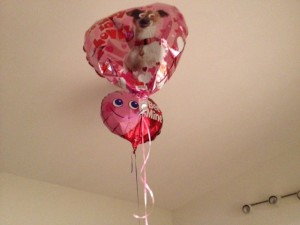Birthday Party Dangers, Part 1: Beware the Balloons
Most people view birthdays, and the parties that go with them, as a time of innocent, joyful celebration. Children’s parties, in particular, are seen as benign, fun-filled experiences for all.
Unfortunately, dangers often lurk here, too, and in greater numbers than most people anticipate. Over the next few weeks, our Wednesday property hazards blog will focus on some of the hidden dangers associated with parties, and birthday parties in particular.
BEWARE THE BALLOONS
Who doesn’t smile at the sight of a big bouquet of colorful balloons?
Most people consider helium-filled balloons a ubiquitous and relatively safe party decoration. Properly managed and supervised, balloons are a lovely sight. Unfortunately, balloons also present several serious dangers for unsuspecting party guests, and lurking liabilities for hosts.
1. Strangulation hazards. Small children and pets may accidentally tangle themselves in balloon strings. Unattended toddlers and pets are at particular risk. Brightly-colored balloons are attractive to children and animals, who may become tangled or accidentally wrap long strings around their necks. Sometimes, this happens on-purpose too. The child intends no harm, but wraps a string around his or her neck as a pretend “necklace” or to get closer to the balloon. Balloon strings should be kept to reasonable lengths, and children and pets should always be carefully supervised in the presence of balloons.
2. Bursting hazards. Balloons can pop violently and without warning. A popping balloon often sends shards of latex flying through the air at high speeds. Balloons which pop near a person’s face can cause lacerations or serious damage to a person’s eyes. A person can even suffer permanent blindness as a result of a popping balloon.
Some balloons burst spontaneously, as a result of manufacturing defects or improper handling or placement. However, injuries can also result from children (or even adults) engaging in improper horseplay, or when pets or toddlers try to eat or chew on balloons. Children should never be allowed to pop balloons near faces–their own or someone else’s–and should be instructed in proper care and handling of balloons.
Balloons should be properly placed and managed, to minimize the risk of injuries from popping.
3. Choking hazards. Popped balloons are extremely hazardous to children and animals. Latex and mylar are choking hazards and can cause suffocation in toddlers and children of all ages. Popped balloons (and their strings) should be removed and disposed of immediately.
Take care to dispose of balloons in places where toddlers and young children cannot reach them. Small children often mistake brightly-colored balloons for candy, fruit roll-ups and other food items. Be sure to dispose of balloons beyond their reach!
Properly managed, balloons are a cheerful addition to parties and gatherings. However, smart property owners will not ignore the dangers balloons represent. Proper placement, management and disposal are necessary to ensure these benign-looking decorations do not become a deadly threat.
© Ross Law, 2014















